#ayurveda body types
Explore tagged Tumblr posts
Text
youtube
#ayurveda#ayurvedic#what is ayurveda#ayurveda retreat#ayurvedic medicine#ayurveda food combining#introduction to ayurveda#ayurveda foods#ayurvedic diet#ayurvedic food#ayurveda doshas#ayurveda for yoga#ayurveda benefits#ayurvedic cooking#ayurveda body types#ayurveda treatment#ayurvedic diet plan#ayurvedic treatment#ayurvedic body types#kapha ayurveda mind body type#ayurveda 101#ayurveda dr k#dr k ayurveda#ayurvedic recipes#Youtube
0 notes
Text
youtube
Modern Ayurveda: A Necessity | Culture Curry | HT Lifestyle
Today, people have started adopting the basics of the ayurvedic ways of eating and lifestyle choices. This includes morning meditations to daily routines, personalized yoga practices, etc. This practice is termed Modern Ayurveda and is getting quite popular. Let’s see how Modern Ayurveda has become a necessity today.
#ayurveda#importance of ayurveda#ayurveda body types#ayurveda diet#benefits of ayurveda#what is ayurveda#ayurveda doctor#maharishi ayurveda#ayurveda vs allopathy#ayurveda food#ayurveda food habits#tulsi ayurveda#superfoods by ayurveda#ayurveda courses#ayurveda sanyasi#courses ayurveda#kerala ayurveda limited#kerala ayurveda academy#ayurvedic pills to replace modern medicines#herbs and ayurveda#significance of ayurveda#ht lifestyle#lifestyle#health#Youtube
0 notes
Text
Discovering Your Dosha: A Guide to Ayurvedic Wellness and Self-Identification
Ayurveda, an ancient holistic healing system originating in India, emphasizes the importance of maintaining balance and harmony within the body, mind, and spirit for overall well-being. According to Ayurvedic principles, every individual possesses a unique constitution known as a dosha type. Understanding your dosha type can help you make informed lifestyle choices, including dietary habits,…

View On WordPress
#ayurveda#Ayurvedic Lifestyle#Ayurvedic Wellness#Dosha Type#holistic health#Kapha Dosha#Mind-Body Balance#Pitta Dosha#Self-Identification#Vata Dosha
2 notes
·
View notes
Text
#ayurveda#health and wellness#health#vata pitta kapha#dosha#ayurveda body type#ayurveda medicine#ayurveda clinic#herbal remedies#ayurveda treatment#ayurveda doctor
0 notes
Text
Discover Your Ayurvedic Body Type: Take the Quiz!

Curious about your Ayurvedic body type? Dive into the ancient wisdom of Ayurveda with our interactive quiz! Understand whether you're Vata, Pitta, or Kapha and how this influences your health, diet, and lifestyle choices. For a deeper exploration and tailored wellness advice, visit our blog. Your journey to balance and harmony starts here!
0 notes
Text
Ayurvedic Secrets to Radiant Skin: Understanding Your Dosha and Simple Homemade Skincare
In the pursuit of healthy, glowing skin, many of us seek solutions in expensive creams, serums, and treatments. But what if the key to vibrant skin lies in ancient wisdom that's been practiced for centuries?
Welcome to the world of Ayurveda, where the holistic approach to skincare goes beyond topical treatments to address the root causes of skin imbalances.
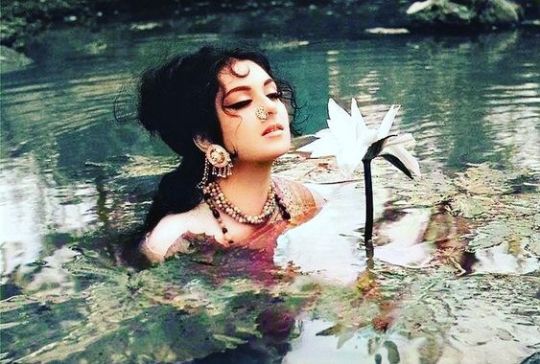

What is Ayurveda?
Ayurveda, often called the "science of life," is an ancient healing system that originated in India thousands of years ago. At its core is the belief that our well-being is intricately connected to the balance of three fundamental energies known as doshas: Vata, Pitta, and Kapha.
Understanding Your Dosha:
Each person is born with a unique combination of these doshas, which influence not only our physical characteristics but also our mental and emotional tendencies. By identifying your dominant dosha, you can tailor your skincare routine to address specific skin concerns effectively.
Vata Dosha: If you have Vata-dominant skin, you may notice tendencies toward dryness, flakiness, and sensitivity. Vata skin often feels parched and is prone to premature aging. To nurture Vata skin, focus on moisturizing and nourishing practices.
Skincare Routine: Massage your skin with warm sesame oil to deeply moisturize and improve circulation. Use gentle, hydrating cleansers and rich, emollient creams to lock in moisture.
Homemade Recipe: Create a hydrating face mask by mixing mashed avocado with honey and a few drops of almond oil. Leave it on for 15 minutes before rinsing with warm water.
Pitta Dosha: Pitta-dominant skin tends to be sensitive, prone to redness, inflammation, and occasional breakouts. Excessive heat and stress can exacerbate Pitta imbalances, leading to increased oiliness and irritation.
Skincare Routine: Opt for cooling and soothing ingredients like cucumber, aloe vera, and sandalwood. Use gentle, non-abrasive cleansers and avoid harsh exfoliants that can aggravate inflammation.
Homemade Recipe: Make a calming face pack by mixing sandalwood powder with rose water and a pinch of turmeric. Apply it to clean skin, leave it on for 15 minutes, then rinse with cool water.
Kapha Dosha: Kapha-dominant skin tends to be oily, prone to congestion, and enlarged pores. Kapha imbalances can result in dullness, blackheads, and a lack of vitality.
Skincare Routine: Focus on purifying and detoxifying practices to balance excess oil and congestion. Use gentle, oil-balancing cleansers and lightweight, non-comedogenic moisturizers.
Homemade Recipe: Create an invigorating scrub by mixing ground oats with yogurt and a pinch of turmeric. Gently massage it onto damp skin in circular motions, then rinse with lukewarm water.
General Ayurvedic Skincare Tips: In addition to dosha-specific practices, there are some general principles of Ayurvedic skincare that benefit all skin types:
Practice Abhyanga, or self-massage with warm oil, to promote relaxation and improve circulation.
Drink herbal teas like chamomile or tulsi to reduce internal inflammation and support overall well-being.
Maintain a balanced lifestyle with adequate sleep, regular exercise, and stress management to promote skin health from the inside out.
Ayurveda offers a holistic approach to skincare that emphasizes harmony between mind, body, and spirit. By understanding your dosha and incorporating simple, homemade remedies into your skincare routine, you can unlock the secrets to radiant and healthy skin naturally. Remember, consistency and mindfulness are key to achieving lasting results. So, embrace the wisdom of Ayurveda and let your inner glow shine through!
Feel free to reach out if you have any questions or need further guidance on your Ayurvedic skincare journey.
#astrology#ayurveda#skincare#spirituality#vedicastrology#hinduism#homemade#lotus#lakshmi#goddess#beauty
82 notes
·
View notes
Text



🥒🌶🥬 According to Ayurveda, one of the ways we can encourage balance in our mind-body type is through the foods we eat. Whether you’re a Pitta who could use some cooling, a Kapha in need of stimulation, or a Vata who requires grounding, we’ve got a hummus recipe to help bring you back to center. 🙏
Vata ☁️
To balance and pacify Vata, foods that are sweet, sour, and salty are best. 🍋 These tastes will help ground and warm Vata’s naturally cold and airy nature. Beets are naturally sweet and provide a grounding effect for the naturally airy Vata. With a side of pita chips, with limited or even no beans, this hummus recipe is ideal for Vata.
Pitta 🔥
To balance and soothe Pitta, it’s recommended to gravitate toward foods with the taste quality of bitter, sweet, and astringent. This helps to cool and calm Pitta’s innate fiery energy. 💦 This recipe uses lime instead of the traditional lemon because lemon irritates the already acidic Pitta digestion while lime juice has a cooling effect.
Kapha 🌿
To balance and invigorate Kaphas' earthy and grounded nature, foods with bitter, pungent, and astringent qualities are best. With both bitter and astringent qualities, artichoke hearts are the perfect match to garbanzo beans and will create a dry lightness for Kaphas. Add a little heat to spice things up and you have the perfect hummus recipe to get Kapha moving. 🌶
10 notes
·
View notes
Text
Going back to our roots- the haircare edition
Part-1: Haircare- Love in Oiling
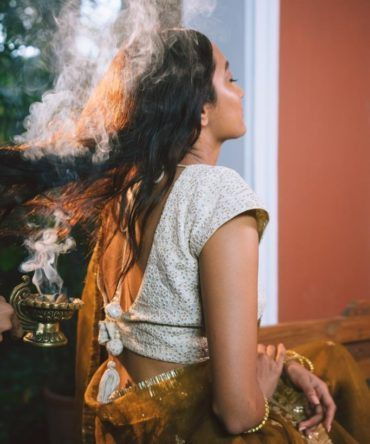
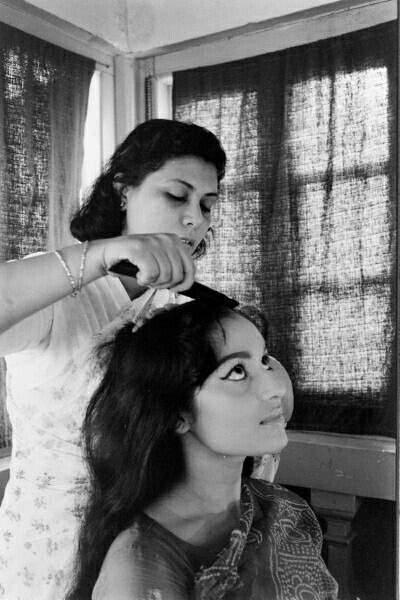
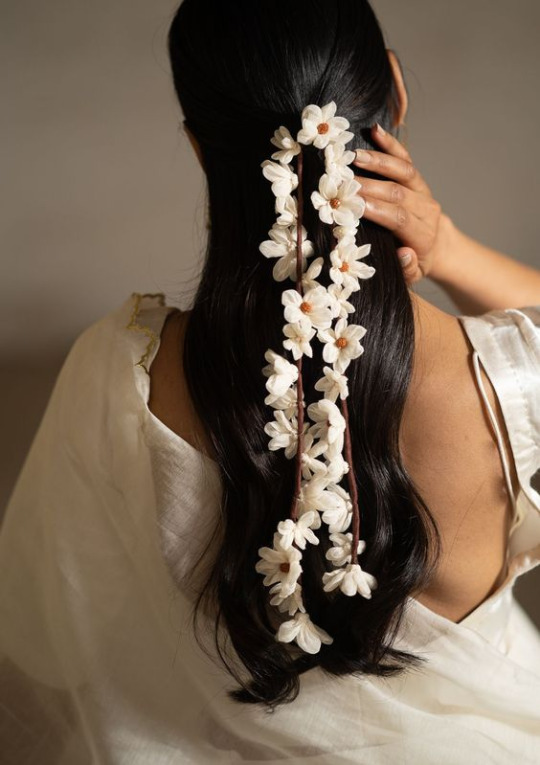
Haircare through oiling transcends generations, embodying a profound expression of love and connection in our culture. It's a shared journey of tenderness, a story every desi knows, of bonding with our mothers and grandmothers. I recall how my mother would lovingly oil my hair, a ritual that strengthened our connection. My hair suffered when I stopped allowing her to care for it, emphasizing that oiling hair is more than just a routine – it's an intimate experience. Beyond mere beauty, hair-oiling serves as a cherished heritage, a bond passed lovingly from one generation to the next.
THE THREE DOSHAS

Ayurveda posits the existence of three fundamental life energies, known as doshas, within every individual:
Vatta
Pitta
Kapha
An excess of any of these doshas can disrupt the body's equilibrium, and its impact is particularly noticeable in its effect on our hair.
In Ayurvedic philosophy, the scalp is perceived as having numerous energy-balancing centres known as "marmas." Hair oiling is considered a rejuvenating practice, as it assists in eliminating any surplus doshas that tend to accumulate in the head.
AYURVEDIC HAIR-TYPE
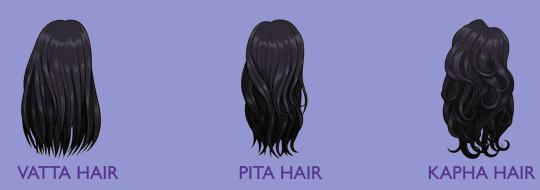
Healthy Vata-Type Hair is relatively thin, but often a bit coarse, may be straight, curly, or a combination of the two, grows quickly, and can be a bit unruly—potentially making it more challenging to style.
Healthy Pitta-Type Hair is straight, soft, predictable, and of moderate thickness, but very fine.
Healthy Kapha-Type Hair is typically wavy, lustrous, full, strong, coarse, and thick.
Common Imbalances
VATA- DOMINANT HAIR
Characteristics: The imbalance in vata dosha causes excessive dryness, flaky dandruff, frizzy and brittle hair. It may also cause hair thinning and split ends.
Care: It is recommended that you oil your hair two-three times a week with almond oil, cocunut oil or sesame oil infused with hair strengthening herbs like bhringraj, liquorice, shatavari, ashwagandha. Avoid harsh chemicals and heat styling to protect fragile Vata hair. Natural hair masks with honey, yogurt, or henna can further strengthen and improve its texture and shine.
Dietary additions: Vata is a cold and dry dosha, therefore, warming, grounding, and nourishing foods like nuts and seeds, with moderately heavy texture, with healthy fats (like Omega 3 fatty acids) are advised. Choose salty, sour, and sweet tastes as well as soothing and satisfying foods.
PITA DOMINANT HAIR
Characteristics: The imbalance in pitta hair might lead to excess heat in the hair follicles, thinning or premature greying hair.
Care: Use coconut oil infused with cooling herbs like hibiscus, amla and kalonji seeds. Include weekly masking with ingredients that repair such as aloe vera and brahmi. Opt for natural, chemical-free hair care products.
Dietary additions: Those with predominant pitta should refrain from spicy and astringent foods, and look for foods that are alkaline, which cool and soothe the digestive fire.
KAPHA DOMINANT HAIR
Characteristics: An imbalance in the kapha dosha can result in excess oil secretion that blocks the follicles of your scalp, which leads to wet and sticky flakes.
Care: The Kapha hair care routine involves cleansing hair and scalp 2-3 times weekly with natural herbs like reetha, shikakai, and triphala powder. For purification, use neem oil. It is effective for dandruff in bi-weekly oil-and-wash sessions.
Dietary additions: Those with the kapha dosha should focus on warm, light, foods made with dry cooking methods like baking, broiling, grilling, sautéing, etc.
Choose organic, chemical-free, and 100% virgin oils, even if they cost use( 3-4 tablespoons). Honestly, I would say get your oils pressed from a local vendor. That's what I do. It's 100% virgin and doesn't cost much at all. Otherwise, you can get them online. If you guys want, I can attach some product links too.
References:
https://www.byrdie.com/hair-oiling-indian-tradition-4795886
https://enrouteindianhistory.com/ayurveda-hair-care-tips-from-ancient-india/#:~:text=Rani Padmini%2C interestingly%2C used a,recently around the 1930s only.
https://www.theswaddle.com/hair-oil-ayurveda-benefits
https://vedix.com/blogs/articles/how-to-determine-your-hair-type
https://www.sukhayuayurved.com/hair-type-and-ayurvedic-doshas/
https://www.vogue.in/beauty/content/ayurvedic-dosha-significance-for-your-hair-type-haircare-routine
https://www.sesacare.com/blogs/blog/what-is-your-ayurvedic-hair-type
(pictures from pinterest)
#desi#desiblr#desi feminine#desi tumblr#desi academia#desi femininity#desi girl#level up#desi tag#feminine#desifemininewoman
21 notes
·
View notes
Text
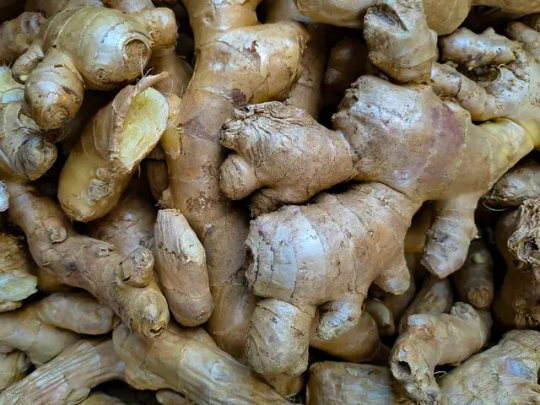
▪️Zingiber officinale.
Ginger was cultivated and used as a spice and medicine in India and China, before historical records even begin. The earliest medical texts of both countries extensively discuss the therapeutic uses of the spice, both in fresh and dried form.
Chinese texts from the fourth century BC describe ginger as a remedy for treating stomach issues, nausea, diarrhea, cholera, toothaches, bleeding and rheumatism. Chinese herbalists also use the herb to treat various respiratory conditions, including coughs and colds. In the fifth century, Chinese sailors were using ginger’s vitamin C properties to treat scurvy on long voyages.
In India, Ayurvedic texts consider ginger to be one of the most important herbs available, to the extent of describing it as an entire medicine chest in itself. Ayurvedic practitioners prescribe ginger as a powerful digestive aid since it fuels digestive fire, whets the appetite, and clears the body’s micro-circulatory channels. This helps to improve the assimilation and transportation of nutrients to targeted body tissues. Ginger is also used in Ayurveda as a remedy for joint pain, nausea and motion sickness.
With such staggering benefits, it’s no wonder the spice has been a staple in kitchens and medicine cabinets for over five thousand years. Moreover, it continues to prove to be an effective natural remedy for many modern diseases, described below.
▪️ Health benefits of ginger.
Popular digestive aid, settles stomach issues.
Powerful anti-inflammatory, reduces joint pain and relieves arthritis.
Therapy for nausea, reduces motion sickness and more.
Provides pain relief, soothes migraines and menstrual pain:
Ginger works on migraines by blocking prostaglandins, which stimulate muscle contractions, control inflammation in the blood vessels, and impact some hormones. Drinking or eating raw ginger at the onset of a migraine attack stifles prostaglandins to block the unbearable pain, and stop the associated nausea and dizziness.
Ginger can also help women effectively reduce the pain and inflammation associated with dysmenorrhea or endometrios.
Anti-tumor properties, successful in killing ancer cells.
Anti-diabetic compounds, lowers blood sugar and increases insulin release.
Heals the heart, treats a variety of cardiovascular conditions.
Relieves respiratory disorders, effective in treating asthma.
Immunity-booster, reduces coughs and colds:
Ginger is a wonderful immune system booster, making it a well-known treatment for colds and flus. And since it helps calm symptoms of upper respiratory tract infection, it also works on coughs, sore throats and bronchitis.
Ginger also has thermogenic properties, so it can warm up the body in the cold and, more importantly, can promote healthy sweating. This type of sweating, which helps to detoxify the body and assist in releasing cold symptoms, has also been shown to fight off bacterial and fungal infections.
Best of all, ginger has concentrated active substances that are easily absorbed by the body, so you don't have to use very much to receive its beneficial effects.
Potent antioxidant, slows down DNA damage.
▪️ Ginger components.
Ginger is closely related to turmeric, cardamom and galangal. Similar to other plants, ginger is a very complex mixture of compounds, containing several hundred known constituents, including beta-carotene, capsaicin, caffeic acid and curcumin.
The pungency in ginger is derived from the principle compounds gingerol, shogaol and zingerone.
Gingerol is the active component in fresh ginger, and is related to capsaicin, which is the active component in chilli peppers. Zingerone – the least pungent compound – occurs when gingerol is cooked, while shogaol – which is twice as pungent – occurs when gingerol is dried.
2 notes
·
View notes
Text

What is Ayurveda?
Ayurveda is an ancient system of natural medicine originating in India over 3,000 years ago. The word "Ayurveda" comes from the Sanskrit terms "Ayus" (life) and "Veda" (knowledge or science), meaning "the science of life." It aims to promote balance within the body, mind, and spirit, using diet, herbal treatments, physical therapy, and lifestyle practices.
Core Principles of Ayurveda
The Doshas (Body Types): Ayurveda identifies three main energy types or doshas, which represent a combination of the five elements (earth, water, fire, air, and ether). Each person has a unique constitution based on these:Vata: Linked to air and ether, governs movement, breath, and the nervous system.Pitta: Linked to fire and water, governs digestion, metabolism, and body temperature.Kapha: Linked to earth and water, governs structure, immunity, and lubrication in the body.Imbalances in these doshas are believed to cause illness, and treatments aim to restore harmony.
Holistic Healing: Ayurveda looks at health comprehensively, focusing on the relationship between the mind, body, spirit, and environment. It promotes balance through:Diet (tailored to one’s dosha)Herbal remedies (like turmeric, ashwagandha, and tulsi)Yoga and meditation to align the mind and bodyDetox therapies (e.g., Panchakarma, which involves cleansing practices)
Daily Routine and Seasonal Adjustments (Dinacharya & Ritucharya): Ayurveda recommends following a daily routine that aligns with nature’s cycles. For example, waking up early, eating at consistent times, and adapting your lifestyle to seasonal changes help maintain health.
Prevention over Cure: Ayurveda emphasizes disease prevention by maintaining physical and mental well-being rather than just treating symptoms after they appear.
Common Treatments and Practices
Abhyanga (Oil Massage): Using warm herbal oils to stimulate circulation and nourish tissues.
Panchakarma: A detoxifying process that removes toxins through techniques like fasting, enemas, and steam therapy.
Dietary Recommendations: Tailored according to one’s dosha to maintain balance.
Herbs and Supplements: Such as Triphala, Brahmi, and Chyawanprash to support various health goals.
Modern Relevance
Ayurveda has gained popularity worldwide for promoting natural remedies and a balanced lifestyle. It's often integrated with modern healthcare, especially for managing chronic illnesses, stress, and improving mental well-being. However, it is essential to consult trained practitioners, as some treatments may not be suitable for everyone, especially without proper guidance.
Leelajani Ayur Care is a leading Ayurvedic hospital in Trivandrum, Kerala, offering personalized treatments that blend traditional Ayurvedic practices with modern wellness approaches. Their services include Panchakarma, detox therapies, stress management, and holistic care programs for individuals, professionals, and children. With over seven years of experience and 32 specialized packages, they focus on treating the root causes of ailments to promote long-term health and well-being.
To learn more, visit Leelajani Ayur Care.
2 notes
·
View notes
Text
youtube
#ayurveda#ayurvedic#what is ayurveda#ayurveda retreat#ayurvedic medicine#ayurveda food combining#introduction to ayurveda#ayurveda foods#ayurvedic diet#ayurvedic food#ayurveda doshas#ayurveda for yoga#ayurveda benefits#ayurvedic cooking#ayurveda body types#ayurveda treatment#ayurvedic diet plan#ayurvedic treatment#ayurvedic body types#kapha ayurveda mind body type#ayurveda 101#ayurveda dr k#dr k ayurveda#ayurvedic recipes#Youtube
1 note
·
View note
Text
What is cholesterol, and how does it affect our body?
High Cholesterol
Too many lipids, or fats, are present in the blood when you have high cholesterol. Hypercholesterolemia or hyperlipidemia are other names for it.
For optimal functioning, your body needs a specific amount of lipids. Your body is unable to use all of the lipids in excess. In your arteries, the excess fat starts to build. Fatty deposits, or plaque, are created when they react to other chemicals in your blood. Years may pass during which this plaque doesn't create any issues, but it builds up inside your arteries without your knowledge.
For this reason, it's risky to have high cholesterol untreated. Your blood includes excess lipids that, unknown to you, contribute to the plaque's growth. If your cholesterol is high, a blood test is the only way to find out.
There are different types of cholesterol:
Low-density lipoprotein: LDL cholesterol is often called ‘bad cholesterol’ because too much of it can clog up your arteries and lead to health problems later on, such as heart disease, heart attacks, and strokes. You do need some LDL cholesterol in your blood. It’s when there’s too much that it’s a problem.
High-density lipoprotein: HDL cholesterol is often called ‘good cholesterol’ because it carries cholesterol away from your cells and back to your liver to be broken down. So, it helps prevent disease.
Reasons for cholesterol

High Cholesterol Effects on the Body
High cholesterol causes plaque to build up inside your blood vessels over time. The buildup of plaque is known as atherosclerosis. Individuals who have atherosclerosis are more at risk for a wide range of diseases. This is due to the vital functions that your blood vessels conduct throughout your body. So, there are consequences when an issue arises with one of your blood vessels.
Your blood vessels are going to build plaque if your cholesterol is high. The plaque gets larger the longer you don't get therapy. You suffer from narrowing or blockage of your blood vessels as the plaque grows.
You may have a long time to continue using your blood vessels. However, they will function better than they need to.
Depending on which blood vessels are blocked, high cholesterol increases your chance of getting more illnesses.

If you want an Ayurvedic treatment for high cholesterol, consult with Dr. Sharda Ayurveda for the best treatment for your high cholesterol problem.
https://shorturl.at/bdeKL
7 notes
·
View notes
Text
Ayurvedic Products Manufacturer in India

Ayurveda emphasizes natural remedies, lifestyle adjustments, and preventive care to maintain health and treat illnesses. By considering individual differences in body types and conditions, Ayurveda aims to promote overall well-being and harmony, making it a valuable complement to modern medicine. Ambico Ayurvedic is a leading Ayurvedic products manufacturer in India, dedicated to harnessing the power of ancient herbal wisdom for modern wellness.By blending traditional Ayurvedic principles with contemporary manufacturing practices, Ambico Ayurvedic ensures that each product promotes balance and vitality, supporting holistic health for individuals worldwide. For more kindly contact us on +91-9136416898.
3 notes
·
View notes
Text
Increasing Demand for Ayurvedic Pain Relief Oil

Indians have been using Ayurvedic pain relief oil since ancient times. Ayurveda is rooted deeply in Indian culture and history. In those ancient times, Indians were aware of the medicinal properties of herbs and plants. Therefore, they were using a blend of those herbs and plant extracts to relieve pain in joints and muscles. In modern times, we precure our knowledge and heritage of Ayurveda to produce and manufacture the same Ayurvedic pain-relieving oil. The only difference is that we manufacture and pack them in modern packaging for public use. But it is the same old essence of ancient Ayurveda and herbal medicine.
There are many recognized Ayurvedic Medicine Manufacturers in India that are making very effective and mint quality Ayurvedic herbal pain oils. These herbal oils are effective in relieving muscle and joint pain. Most of the time, they are very effective in treating common body pain. Pain around the knees, wrists, and musculoskeletal joints can be relieved by using an effective Ayurvedic painkiller oil.
These oils are blends of selective and effective plant and herb extracts. This oil penetrates the skin and provides relief from pain and swelling. Rubbing affected areas also improves blood circulation, which eventually relaxes the muscles and provides relief from strain and stiffness. In total, these Ayurvedic painkiller oils are very effective and safe to use.
Uses and Benefits of Ayurvedic Pain Relief Oil
Herbal and Ayurvedic painkiller oils are safe to use. Anyone suffering from joint and muscle pain can use these oils for a longer period of time. Being herbal in nature, they do not produce any side effects. Herbally blended oils are extremely effective in treating chronic muscle and joint pains. These oils have inflammatory properties that reduce swelling and provide relaxation to muscles from stiffness and strains. They are able to cure mostly all types of muscles and pain associated with bones.
These Ayurvedic Pain Relief Oil are best for both osteoarthritis and arthritis. They can provide relief for a long time.
Best Ayurvedic Medicine Manufacturers in India
As we know, India is a land of Ayurveda. This is why Indians have faith and trust in Ayurvedic medicinal treatment methods. India is the biggest market for Ayurvedic and herbal products.
To meet this huge market demand for herbal medicines, manufacturing companies in India are producing very large quantities of herbal products. These big manufacturers also provide lucrative Ayurvedic PCD franchises for herbal medicines and products.
Ayurvedic PCD franchises products are one of the most profitable business ventures in recent times. Since the Indian consumer market for herbal and Ayurvedic products is huge, these PCD franchise programs are creating tons of opportunities to grow in the pharma market. And Casca Remedies is one of those PCD pharma franchises that enables its partner to expand and grow in the pharma market as an individual entrepreneur.
Their inhouse Ayurvedic painkiller oil, EVOJOINT, is best selling product on the market. That is why Casca Remedies is best for owning an Ayurvedic pharma franchise.
#Ayurvedic Pain Relief Oil#pcd pharma franchise#Ayurvedic PCD franchises#Ayurvedic PCD#ayurvedicmedicine
3 notes
·
View notes
Text
Veera's Hair Haven - The Doshas
Hi everyone!
This week, I am grateful to be able to teach you about the hair Doshas! Keep in mind this might be long but packed with useful information!
The Ayurveda, or the Indian health and wellness system believes in the existence of Doshas, which are used to define your hair "type."
Generally they are divided into three Doshas, the first being Vata, the next being Pitta, and finally, Kapha.
Vatta:
Vata-dominant hair often struggles with dryness, frizz, and breakage. It can feel thin and lackluster, and the scalp tends to be sensitive. Gentle care is essential for this hair type.
To nourish and protect your Vata hair, focus on deep hydration and gentle treatments. Regular oiling with coconut or sesame oil can work wonders. Don't forget to pamper your scalp with gentle massages. Avoid harsh chemicals and excessive heat styling to prevent further damage.
For an extra boost, try natural hair masks. Honey and yogurt offer intense hydration, while henna can add strength and shine.
Pitta:
Pitta hair is often characterized by its fine texture and natural shine. However, it can be prone to premature graying, thinning, and oiliness. The scalp tends to be sensitive, reacting easily to harsh products. To maintain its health, balance is key.
Gentle care and cooling treatments are essential for Pitta hair. Look for products with soothing ingredients like aloe vera to calm the scalp.
Kappha:
Kapha hair is often characterized by its thickness and natural body. However, it can also be prone to oiliness, flatness, and dandruff. The scalp tends to be balanced but can become oily over time.
To maintain the health and bounce of Kapha hair, focus on balancing oil production and adding volume. Regular cleansing and lightweight products are essential.
Thats it for this week!
4 notes
·
View notes
Text
The Best Shirodhara Treatment: A Comprehensive Guide to This Ancient Ayurvedic Practice
Shirodhara is a revered Ayurvedic therapy that involves pouring a steady stream of warm herbal oil or other therapeutic liquids over the forehead, particularly on the "third eye" area.
This ancient practice, rooted in Indian holistic healing traditions, aims to promote mental clarity, alleviate stress, and balance the doshas—Vata, Pitta, and Kapha. Shirodhara is not merely a relaxation technique; it is a profound treatment that offers a multitude of physical and psychological benefits.
To truly appreciate and select the Best Shirodhara treatment in Ahmedabad, one must understand its history, benefits, and the specifics of the treatment process.
The Origins and Philosophy of Shirodhara
Shirodhara, derived from the Sanskrit words "Shiro" (head) and "Dhara" (flow), is a part of Panchakarma, the five-fold Ayurvedic detoxification programme.
This therapy has been practised for thousands of years, with its origins tracing back to ancient Ayurvedic texts. The primary philosophy behind Shirodhara is the principle of balance.
Ayurveda posits that health and wellness depend on a delicate balance between the mind, body, and spirit. Shirodhara is designed to calm the mind and enhance the function of the central nervous system, leading to overall equilibrium.
Historically, Shirodhara was used to treat conditions related to the head, including migraines, insomnia, and anxiety.
The continuous flow of warm oil is believed to have a deeply meditative effect, helping to release pent-up stress and tension while nourishing the scalp and hair. This holistic approach makes Shirodhara a unique and invaluable treatment in the modern wellness landscape.
The Process and Experience of Shirodhara
A typical Shirodhara session begins with a brief consultation with an Ayurvedic practitioner to determine the individual's dosha type and any specific health concerns.
The choice of oil or liquid used in Shirodhara depends on this assessment. Commonly used oils include sesame oil, coconut oil, and specially prepared herbal oils, each chosen for their unique therapeutic properties.
The treatment itself involves the patient lying on a comfortable treatment table with their eyes covered.
A specially designed vessel, called a dhara pot, is positioned above the forehead.
Warm oil is then poured in a thin, steady stream onto the forehead, oscillating rhythmically across the forehead to ensure an even distribution. The sensation is often described as deeply soothing and hypnotic, inducing a state of relaxation akin to meditation.
The duration of the oil flow typically ranges from 30 to 60 minutes, depending on the individual's needs.
After the treatment, it is customary to rest quietly to allow the benefits to fully integrate. Many recipients report immediate feelings of tranquillity and heightened mental clarity following the session.

The Benefits of Shirodhara
Shirodhara offers a plethora of benefits that extend beyond mere relaxation. The therapy is known to significantly reduce stress and anxiety levels, making it an excellent treatment for those suffering from chronic stress or burnout.
The gentle, consistent flow of oil stimulates the hypothalamus, which helps regulate hormones and can lead to improved sleep patterns and mood stabilisation.
Additionally, Shirodhara can improve cognitive functions such as memory and concentration by calming the mind and reducing mental fatigue.
The therapy is also beneficial for various skin and scalp conditions; the herbal oils nourish the scalp, promoting healthy hair growth and alleviating conditions such as dandruff.
For those with neurological disorders, Shirodhara has shown promise in alleviating symptoms associated with conditions like hypertension, migraines, and vertigo. The therapy’s ability to calm the nervous system and enhance blood circulation contributes to these therapeutic effects.
Choosing the Best Shirodhara Treatment
To ensure the best Shirodhara experience, it is essential to select a reputable Ayurvedic clinic with certified practitioners.
The quality of the oils and the expertise of the practitioner play crucial roles in the effectiveness of the treatment. Look for clinics that offer personalised treatments tailored to individual dosha types and specific health concerns.
Reading reviews and testimonials from previous clients can provide insights into the clinic’s reputation and the experiences of others.
Additionally, some modern wellness centres offer Shirodhara as part of a comprehensive Ayurvedic treatment package, which may include dietary recommendations, yoga, and other therapies to enhance overall well-being.
Conclusion
Shirodhara is more than just an Ayurvedic therapy; it is a holistic experience that rejuvenates the mind, body, and spirit.
Whether you seek relief from stress, improved mental clarity, or holistic healing, the best Shirodhara treatment in Ahmedabad can offer profound benefits.
By understanding the origins, process, and benefits of Shirodhara, and by choosing a reputable clinic, you can fully immerse yourself in this ancient practice and enjoy its transformative effects.
#panchakarma treatment in ahmedabad#ayurvedic doctor in ahmedabad#basti treatment in ahmedabad#ayurvedic treatment in ahmedabad
2 notes
·
View notes